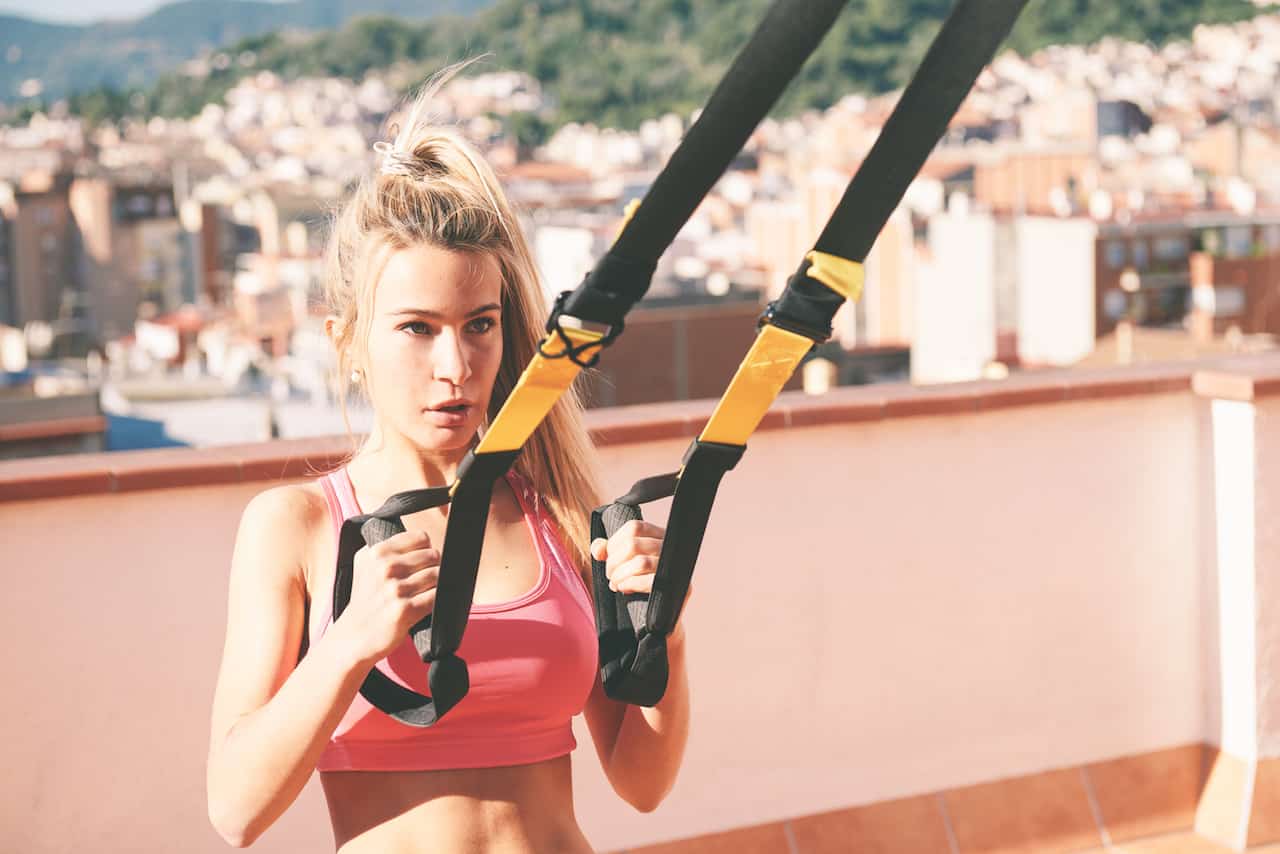Fitness Move of the Week: TRX Guide

The TRX is a funny little pair of yellow straps that typically hang from the top of a cable pulley machine or set of pull-up bars. TRX Suspension Training was actually developed by the US Navy SEALS to utilise your own bodyweight to create a variety of exercises challenging strength, balance, flexibility, and stability. Thanks to the suspension factor, you can move your body in an astounding number of ways that you couldn’t normally (thanks to gravity)! And because you control the movement, this device can be used for all fitness levels, from very beginner to expert.
This guide will help you get acquainted with the TRX and a few of the many ways to use it. It can be used a full-body device to work all muscles, or you can use it for a few isolation exercises as part of a bigger workout. You can use the TRX as often as you want, as long as you’re taking proper rest in between sessions.
The following are some simple, effective movements you can do on the TRX during a workout:
Low Row:
- Set the TRX straps to be as short as they can go (or close to it). Grab the handles and place yourself below the straps, with your chest facing the ceiling. Your heels should be on the floor with your toes pointing up, your arms fully extended.
- Pull yourself up towards the strap with your elbows remaining close to your sides. Your core should be tight; only your arms should move.
- Repeat as desired.
Chest Press:
- Stand a few feet back from the TRX. Place your hands in the handles and lean forward until you’re at a comfortable but challenging angle. Your core should be engaged.
- Bend your arms like you’re doing a push-up. Bend until you reach a 90-degree angle (with your elbows close to your sides) and then press back up.
- Repeat as desired. To make the movement more difficult, move your feet back further to decrease the angle between your body and the floor.
Squat:
You may be thinking, “Wait, I already know how to squat!” But the TRX provides an extra component that bodyweight squats can’t: controlled resistance. Additionally, the form that it forces you into may help correct any potential issues with your squat form.
- Grab the handles and move back (the straps should be close to fully extended).
- When they are taught and your arms are fully extended, squat down, keeping your weight in your heels.
- Repeat as desired.
- Bonus challenge 1: shorten the straps a bit and try jump squats. Jump out of your sunken position while holding onto the straps.
- Bonus challenge 2: try one-leg squats by extending one leg out perpendicular to your body and pressing up with the other leg.
Crunch:
- Place your feet in the stirrups. The straps should be 6-10 inches above the floor.
- Extend into a plank position. Contract your core and bring your knees to your chest. Make sure your arms are directly under your shoulders.
- Repeat as desired.
Further Resources
Once you’ve learned the basics, you can move onto more complex and challenging TRX movements. Here are some helpful resources:
- Anytime Fitness has a great blog full of information, and they have multiple guides to TRX moves.
- TRX Training has its own site with loads of tips and videos demonstrating movements.
- Greatist has a list of 45 TRX exercises that you can combine as you want.
- This post from Daily Burn has instructional illustrations you can use to follow their 20-minute TRX workout. They have more posts for TRX if you just search “TRX” in their search bar as well!

